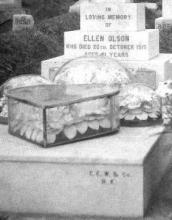1 Feb 1943, Chronology of Events Related to Stanley Civilian Internment Camp
Primary tabs
On or about this date what was sometimes called the 'Reign of Terror' begins. Today's entry discusses the meaning of the phrase and its appropriateness. For incidents related to this theme see e.g. the entries for February 10, February 11, February 18, February 20, February 23, May 2-7, October 29 (all 1943)
The phrase ‘Reign of Terror’ is used half-ironically by Emily Hahn (China To Me, 1985 ed., 387). It seems to have been current in Hong Kong at the time (China Mail, December 25, 1945, page 2). It refers to a period which saw the Japanese military police, the Kempeitai ‘strike back’ against all forms of ‘illegal activity’ by arresting and excuting as man of those involved as they could (Philip Snow, The Fall of Hong Kong, 2003, 185). This began in February, 1943 and, as far as the British communities went, ended in January 1944 with the arrest in Stanley of 3 (or possibly 4) of the formerly uninterned bankers.
It was prompted by the success of the various resistance organisations - the British Army Aid Group, the communist East River Column, and the Nationalist underground led by Sun Bonian - in creating networks to send illegal messages to and from the camps, to help escapers, to pass military information to the Americans, and so on. People left outside Stanley had long been operating illegal systems of humanitarian aid, and these too were to be destroyed by the Kempeitai in the coures of their campaign, although they're unlikely to have been what really concerned them.
The phrase 'reign of terror' in describing this campain - obviously based on events in France in 1792-1795- is justified in that the Kempeitai arrests, which resulted in imprisonment in appalling conditions, sometimes (although not always) in brutal torture and occasionally in execution, certainly struck terror into the ‘stay-outs’ and, after it arrived in Stanley on June 28, into the internees. And, in percentage terms, the number of ‘stay-outs’ who were arrested, executed or who died in prison was high.
But Philip Snow is quite right to point out that the suffering undergone by the ‘white’ British community was much less than that of the Chinese and other ethnic groups. By my count, the number of Britons executed was slightly higher than Snow’s figure of 10 – it was 11, plus one American and one Canadian; but the near contemporary figure he cites of 10,000 Chinese executed would suggest – roughly adjusting for population size – that the Chinese were judicially killed at about 3-5 times the rate of the British. And there are much higher estimates: Snow quotes a Chinese source that suggests 50,000 deaths resulted directly and indirectly from the activities of George Wong, a single Chinese collaborator with the Kempeitai. (Snow, 2003, 402.)
Even in the period February-July when most of the British arrests took place, the Chinese and other Asians were arrested in much greater numbers. October 29 was one of the blackest days in the history of Stanley: it saw the execution on Stanley Beach of 6 internees, one former internee, the husband of an internee and two people undoubtedly known to many in the camp. Nevertheless, the majority of the 33 people to die were Asian.
Further, we know that Vandeleur Grayburn and David Edmondston died of malnutrition, in spite of having extra food and vitamins sent in both legally and secretly. Prison rations were not calculated to keep anyone alive for long without extra help, and uncounted poor Chinese must have died of starvation or the diseases of malnutrition.
Finally, the reason why estimates of relative death rates must be very rough is that Hong Kong’s population during the occupation was never static. The Japanese faced a real problem: the numbers in the ‘captured territory’ had been swollen dramatically by the refugees fleeing the fighting in southern China, and feeding so many people was impossible under wartime conditions. But the way the Japanese set about reducing numbers caused massive suffering and death – people were taken to barren islands and left there to eat each other or starve, or dumped on the ‘plague-ridden coast of Guangdong’ (Snow, 2003, 167). Quite rightly much of the evidence at the trial that led to Gendarme chief Colonel Noma’s execution concerned the Kempeitai’s role in this other ‘reign of terror’. At its height, about two thousand people a week – vagrants, poorer workers or the unlucky – were being treated in this manner.
The real ‘reign of terror’ was that aimed at the Chinese. The real indictment of Japanese rule in Hong Kong was the treatment of the Asian majority they claimed to be liberating.
For an important caveat about the phrase ‘the Japanese’ see
http://brianedgar.wordpress.com/2012/01/22/reality-check-1-the-japanese/

